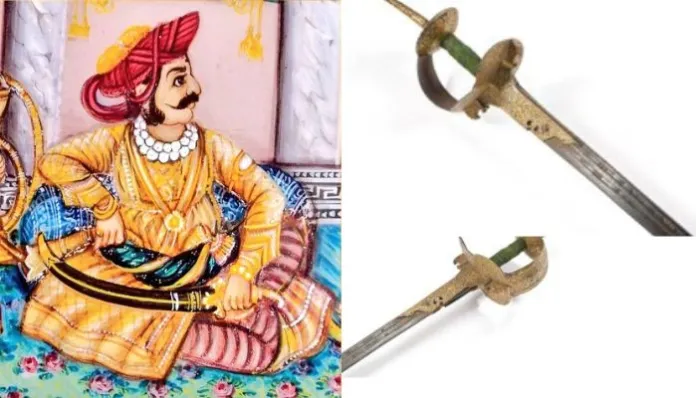Maharashtra
Iconic Sword of Raghuji Bhosale I
- 02 May 2025
- 4 min read
Why in News?
The Maharashtra government has successfully reclaimed the iconic sword of legendary Maratha warrior Raghuji Bhosale I, at an auction conducted by Sotheby’s in London.
Key Points
- Historic Achievement by Maharashtra:
- The reclaimed item is the 18th-century sword of Raghuji Bhosale I, a legendary Maratha general and founder of the Nagpur-based Bhosale dynasty.
- Raje Mudhoji Bhosale of the Nagpur royal family welcomed the move and praised the timely intervention of both state and central authorities.
- Officials confirmed that the sword will soon return to India and is expected to be displayed in a museum or heritage centre.
- Legacy of Raghuji Bhosale I:
- Raghuji Bhosale I (1695–1755) served as a prominent general under Chhatrapati Shahu Maharaj.
- He earned the title ‘Senasaheb Subha’ for his military prowess.
- He led major campaigns in Bengal (1745 and 1755), expanding Maratha control into Bengal and Odisha.
- Raghuji also extended his influence into Chanda, Chhattisgarh, and Sambalpur.
- His victories in South India, including over the Nawabs of Kurnool and Cuddapah, helped solidify Maratha dominance.
- Historical and Artistic Value of the Sword:
- The reclaimed sword is an example of the ‘firangi’ style — featuring a straight, European blade combined with a locally crafted Mulheri hilt.
- The hilt is intricately decorated with koftgiri gold inlay and wrapped in green cloth.
- An inscription in Devanagari reads: “Shrimant Raghoji Bhosale Senasaheb Subha Firang”, suggesting the sword belonged to or was custom-made for Raghuji Bhosale.
- The European blade bears a manufacturer’s mark, highlighting the global arms trade and Indo-European fusion of the 18th century.
- Possible Historical Origins of the Sword:
- Experts speculate the sword may have been part of the loot seized by the British after the 1817 Battle of Sitabuldi, where the East India Company defeated the Nagpur Bhosales.
- It may also have been gifted to the British in the aftermath of the battle.
Nagpur Bhosales
- The Nagpur branch of the Bhonsle dynasty was established by Raghoji Bhonsle I in the early 18th century.
- Under Raghoji’s leadership, Maratha influence spread across central and eastern India, including parts of modern-day Madhya Pradesh, Chhattisgarh, Jharkhand, and Odisha.
- The Nagpur Bhonsles identified themselves as Kshatriyas and traced their ancestry to the Sisodia Rajputs of Udaipur, highlighting their royal heritage.
- The family earned the title "Hinganikar" because an ancestor—likely a contemporary of Maloji Bhonsle (grandfather of Chhatrapati Shivaji Maharaj)—rehabilitated the village of Beradi near Hingani in present-day Pune.
- The Nagpur Bhonsles ruled over a region rich in iron and copper, materials that were expertly used to produce both everyday tools and high-quality weaponry.
- The weapons manufactured under the Bhonsles were celebrated for their superior craftsmanship, artistry, and functional design—reflecting a blend of martial skill and aesthetic excellence.







